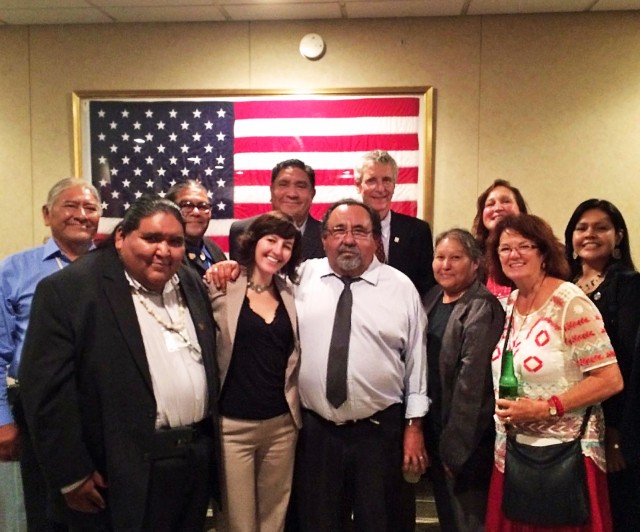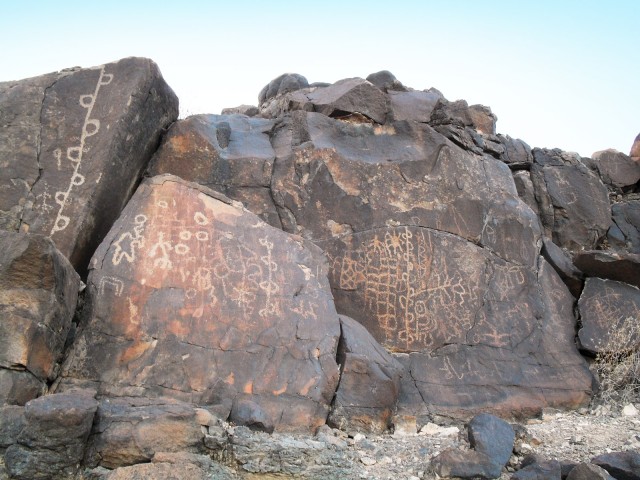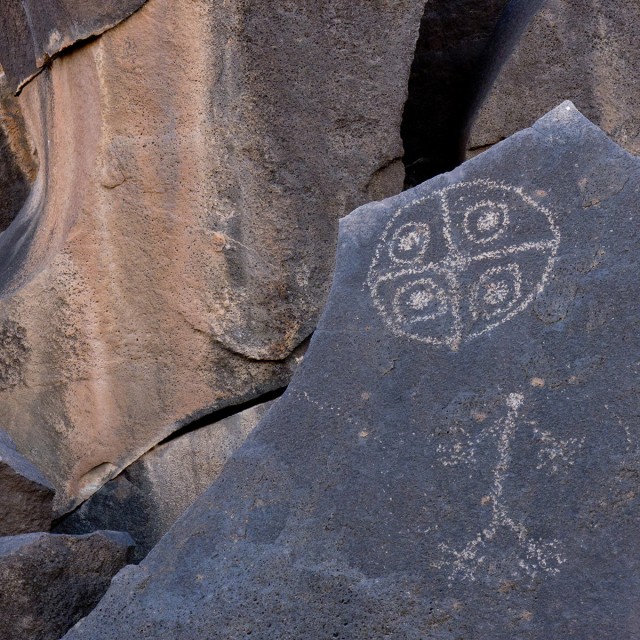- Home
- >
- Preservation Archaeology Blog
- >
- Carrying Gila Bend to Washington and Making “Nat...
(October 22, 2015)—As the month of September drew to a close, a group of 13 set out early on a gray Washington, D.C. morning to fulfill an educational mission. We assembled at 7:00 a.m. at the offices of the National Trust for Historic Preservation. Our team members included two from the National Trust, one from the Ak-Chin Indian Community, two from the Gila River Indian Community, two from the Salt River Pima-Maricopa Indian Community, four from the Tohono O’odham Nation, and one from the Anza Trail Foundation; I represented Archaeology Southwest. Each of us had a slightly different perspective on why the proposed Great Bend of the Gila National Monument was nationally significant, and each of us got the opportunity to share our viewpoint many times over in the ensuing 12 hours.

The proposed Great Bend of the Gila National Monument begins just over a half-hour drive west-southwest from downtown Phoenix. It extends about 75 linear miles along the Gila River and encompasses some 84,000 acres. In this extremely hot and arid region, the river sustained life, serving as a travel route and a place to call home for millennia. The weathered volcanic outcrops that line much of the river margin bear world class rock art—perhaps some 75,000 individual petroglyph elements are present in the proposed national monument. At this time, so little intensive study has been completed that only rough estimates are possible. Juan Bautista de Anza passed through this area in 1776 en route to founding San Francisco as a Spanish colony, and in the next century, the Mormon Battalion and the Butterfield Overland Mail Line followed the lower Gila.

These are just a few of this area’s dramatic stories. Aaron Wright (Archaeology Southwest), Pat Stein (Arizona Preservation Consultants), Barnaby Lewis (Tribal Historic Preservation Officer, Gila River Indian Community), and I have been working to complete a technical report that addresses the deep and interwoven cultural significance of the Great Bend of the Gila. It will be released to the public very soon.
Consistently, the O’odham speakers from these four tribal communities highlighted the strong traditional values the resources of the Great Bend of the Gila hold for them. And they also stressed their values to other tribal groups with ties to the region, to the state of Arizona, and to the entire nation. To give you a sense of the importance of this place to the O’odham, I want to share a brief quote from the Foreword to that draft document that was written by Barnaby Lewis:
Archaeological sites define and establish the connections O’odham have with their Huhugam ancestors. The spiritual, reverent, and respectful associations assist in maintaining our links to these ancestral and sacred places. Spiritual associations to sacred places in the landscape define the existence and extent of the O’odham world. These places are not just historically significant; by virtue of their role in annual cycles of universal and spiritual renewal, religious practice, and traditional knowledge, they are critical to O’odham beliefs about cultural perpetuation and survival.
This is a powerful message. It was a message that was delivered with fervor and with a personal perspective by all nine of the O’odham representatives—each in their own gracious and deeply engaged way.
I was proud to represent the perspective of professional archaeology and of Archaeology Southwest. I was honored to be in the company of such distinguished and sincere advocates. We were all encouraged to hear that Congressman Raúl Grijalva plans to reintroduce a bill to establish the Great Bend of the Gila National Monument by early in November of this year. We were especially pleased that at least three of the congresspeople with whom we shared our views on the Great Bend that day offered support for the bill.
You, too, can make this personal. Add your names to the letter urging Representative Grijalva to reintroduce the bill to establish the Great Bend of the Gila National Monument.
For more information, click here.

One thought on “Carrying Gila Bend to Washington and Making “National Significance” Personal”
Comments are closed.
Explore the News
-
Join Today
Keep up with the latest discoveries in southwestern archaeology. Join today, and receive Archaeology Southwest Magazine, among other member benefits.

Most stakeholders from Gila Bend and the surrounding area DO NOT support this proposed national monument for several reasons. This will have a negative impact on those residing and doing business in the area of the proposed monument. The BBC study used to promote the big economic impact that will happen in this area is flawed and not realistic. This proposed national monument will provide an even bigger safe corridor for the smuggling of drugs and humans. And, of course, the residents and businesses of Gila Bend and the surrounding area, will be the ones that feel the effects of the loss of 75 miles of these (now accessible) public lands. How about a couple of National Historic Landmarks instead of this huge land grab that is totally unnecessary?